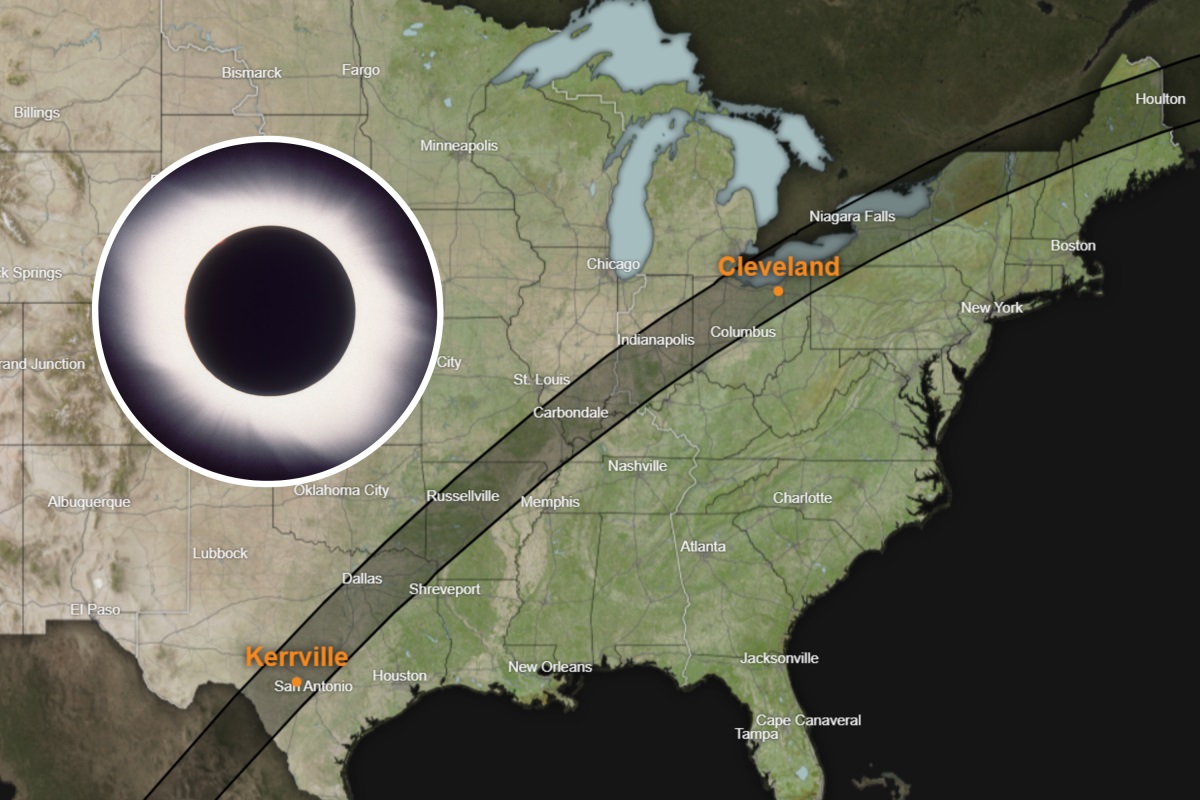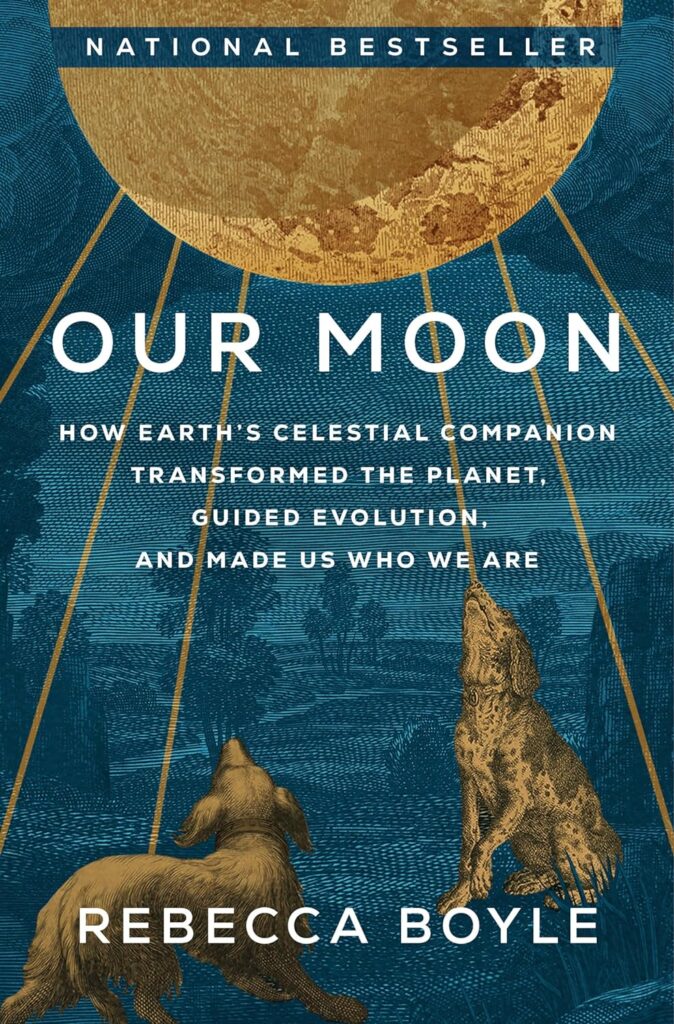On Monday, April 8th, a remarkable event will unfold as a total solar eclipse casts parts of 15 U.S. states into sudden darkness while the moon’s expansive shadow traverses the continent.
This April 8th total solar eclipse will travel northeast from Mexico to Canada over several hours, captivating an estimated 44 million people residing in the path of totality—the exclusive area where the complete phase of the eclipse will be observable. Meanwhile, a partial eclipse will be visible across nearly the entire United States.
To understand this celestial phenomenon and safely witness the spectacular event on April 8th, here’s everything you need to know about solar eclipses.
What is a total solar eclipse?
A total solar eclipse occurs when the moon moves directly between Earth and the sun, appearing to obstruct the sun’s entire face from our perspective. Though the moon aligns with the sun monthly during its new moon phase, specific conditions are necessary for a solar eclipse to transpire.
Where to observe the April 8th total solar eclipse
The total eclipse will only be visible within the 115-mile-wide path of totality stretching across 10,000 miles from Sinaloa, Mexico, to various Canadian provinces.
The 15 U.S. states in the path of totality include Texas, Oklahoma, Arkansas, Missouri, Kentucky, Tennessee, Illinois, Indiana, Ohio, Michigan, Pennsylvania, New York, Vermont, New Hampshire, and Maine. However, Tennessee and Michigan will experience only partial coverage by the moon’s shadow.
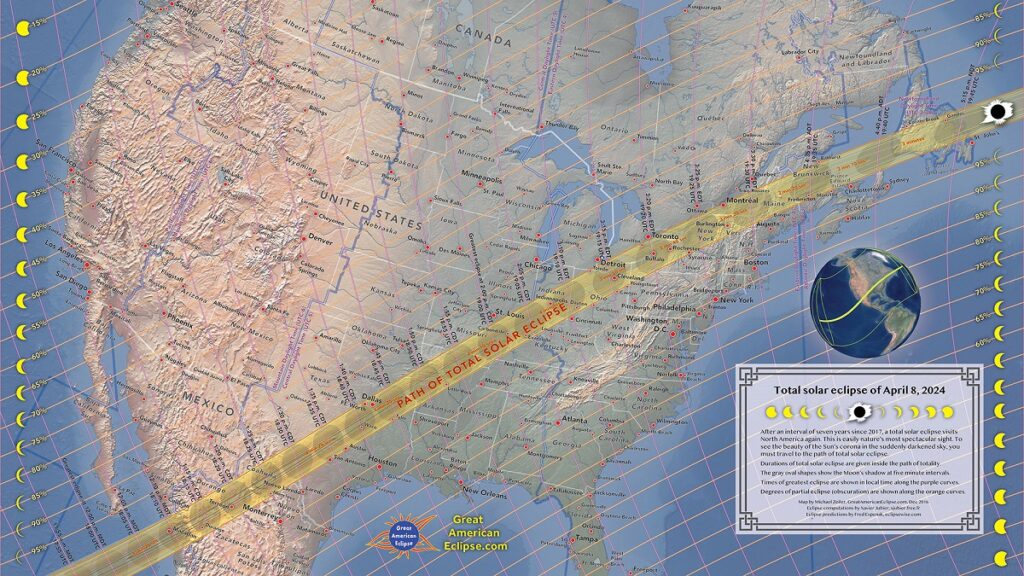
Only within these states will the total eclipse be observable, and even within this area, one must be within the path of totality to witness it entirely.
The closer one is to the path’s center and the further southwest, the longer the totality phase will last, reaching a maximum of 4 minutes and 27 seconds in Torreón, Mexico.
For detailed information on totality duration and timings in different cities, visit the Great American Eclipse website.
Where will the partial eclipse be visible?
The partial phase of the eclipse will be visible to varying degrees across the entire contiguous United States, ranging from a 99% partial eclipse near the path of totality to a 15% partial eclipse far northwest of the path.
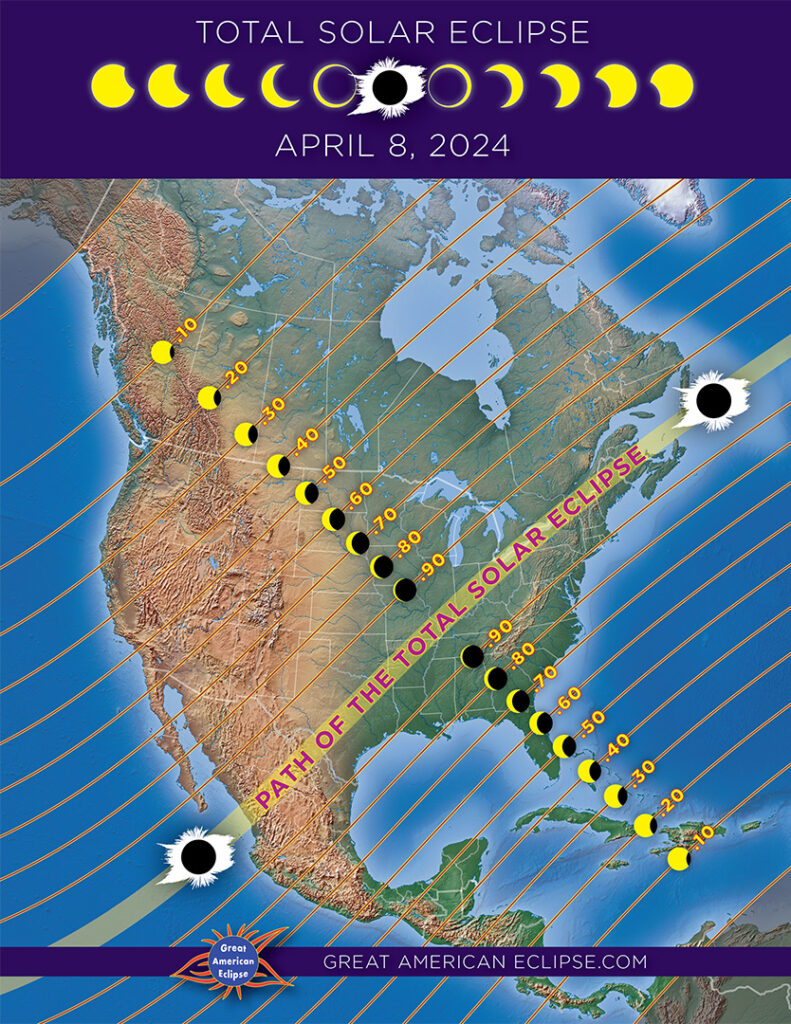
How to safely view the eclipse
To observe the partial eclipse phases, protective eyewear such as ISO-certified solar eclipse glasses is mandatory at all times, regardless of one’s location.
It’s crucial to emphasize: Never gaze directly at the partial eclipse without protective eyewear, as this can lead to permanent eye damage.
The sole safe opportunity to view the eclipse with the naked eye is during the brief period of totality when the sun is fully obscured by the moon, according to NASA. Only viewers within the path of totality can remove their solar glasses during this moment.
Alternatively, safe methods to observe the partial eclipse phase include using handheld eclipse viewers, viewing through solar telescopes or binoculars with solar filters, or watching a NASA livestream from home.
What time does the eclipse start?
The eclipse commences in Mazatlán, Sinaloa, at 9:51 a.m. local time (12:51 p.m. EDT) and traverses the continent for several hours before concluding near Newfoundland and Labrador, Canada, at 5:16 p.m. local time (3:46 p.m. EDT).
Here are the times of totality in the 13 states where it will be widely visible.
What to expect during totality
Depending on atmospheric conditions, totality may usher in various phenomena. As the moon’s shadow approaches, a notable temperature drop of 5 to 10 degrees Fahrenheit (2.8 to 5.6 degrees Celsius) is typical, often causing low-level clouds to dissipate.
Approximately 30 seconds before totality, shadow bands—wavy lines—might manifest on buildings and vehicles. In the final moments before totality, observe the sky (with eclipse glasses) for Bailey’s beads, dazzling dots marking the last glimpses of sunlight filtering through lunar mountains.
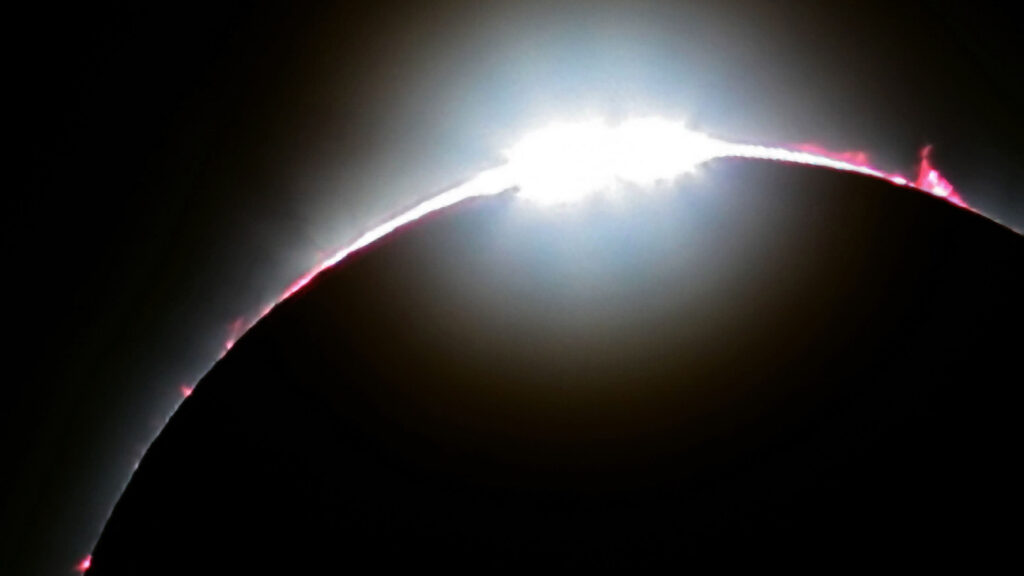
Under clear skies, totality transforms midday into twilight, unveiling a darkened sky where bright stars and planets may emerge. A 360-degree sunset may grace the horizon, accompanied by eerie behaviors from animals and altered perceptions of color. During full eclipse, the sun’s corona becomes visible behind the moon’s silhouette.
After a few minutes, totality concludes, and eclipse glasses must be worn again for safe viewing.
Discover

